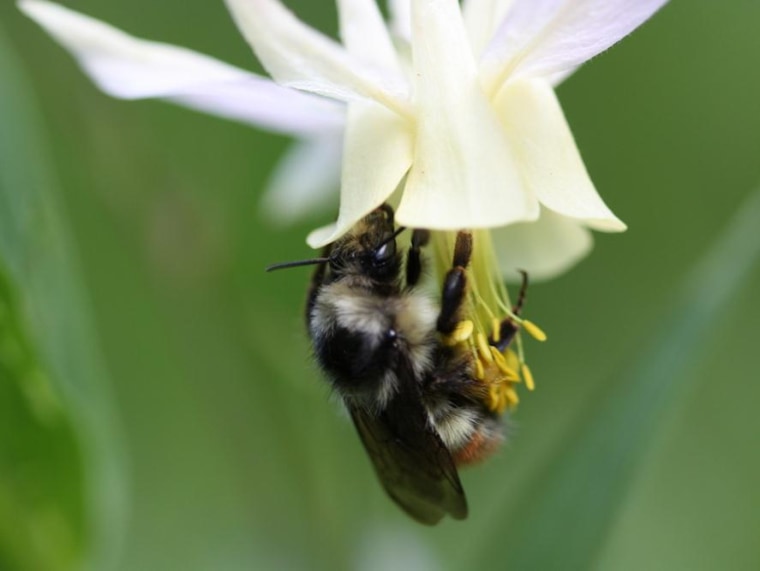Bumblebees have earned a reputation as unlikely fliers, but mounting evidence suggests the bugs are high-achievers when it comes to flight.
One extreme species, a new study reports, is specially adapted to high-altitude flight, and — theoretically — can fly over the highest peak on Earth, Mount Everest.
Bumblebees caught on mountainsides in southern China, exhibited a willingness to fly up to 9,000 meters (29,527 feet) in simulated conditions — even though they live around 5,000 meters (16,404 feet) above sea level. Everest tops out at about 8,850 meters (29,000 feet).
"We were shocked," said Michael Dillon, a biologist at the University of Wyoming who was part of the bug capture party trekking through the Sichuan Prefecture in 2005.
"There is a perception that the bumblebees are bumbling fliers," he told NBC News. But their results proved otherwise.
As the air thins, bumblebees increase the arc through which their wings flap, getting a wider sweep of their wing with every beat. At the highest altitudes, their wing sweep was 15 percent wider.

On the mountainside, the researchers caught and trapped the bugs in a vacuum-sealed jar. They gradually sucked out the air with a hand-pump, to mimic the feeling of thinning air and flying higher.
Bumblebees would climb to the second section of the jar up at a simulated "height" of 9,000 meters. At 9,200 meters, they'd take off and hover, and then collapse, the Dillon and co-author Robert Dudley report in the Wednesday edition of Biology Letters.
By comparison, bar-headed geese, among the world's highest-flying birds, can hit 6,400 meters (21,120 feet).
Have any bumblebees been spotted near the real peak? "Not that I know of!" Dillon told NBC News. "It is probably way too cold and there are likely no flowers."
